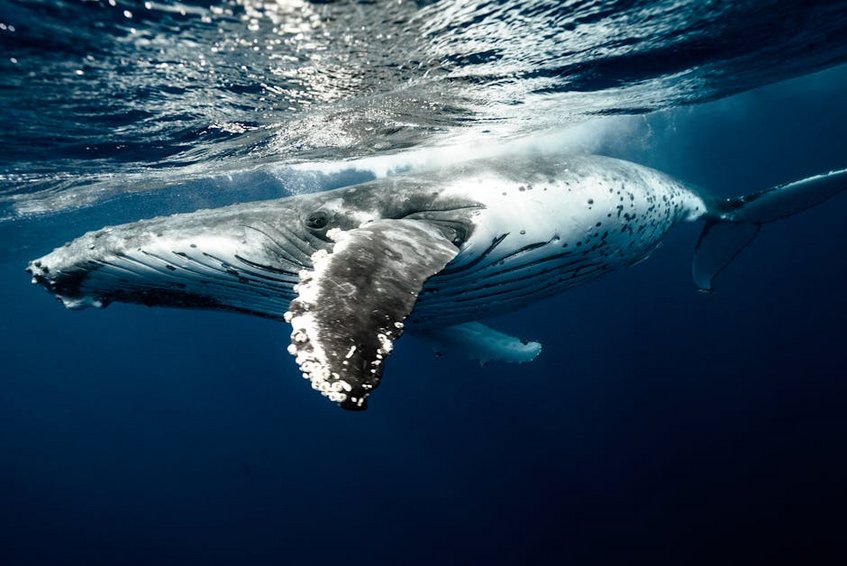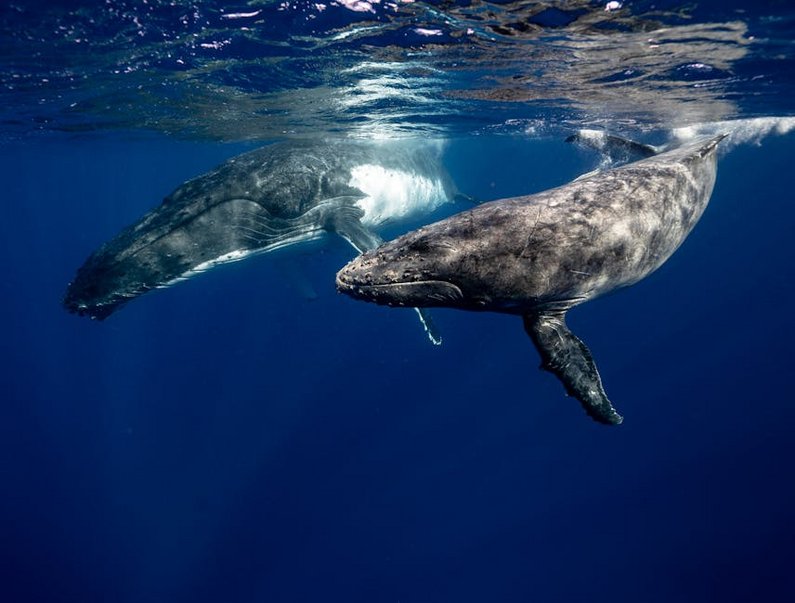Tonga Whale Watching: An Unforgettable Encounter with Gentle Giants
Imagine floating in the crystal-clear waters of the South Pacific, heart pounding with anticipation, when suddenly a 40-ton humpback whale and her newborn calf glide gracefully beneath you. This isn’t a scene from a documentary—this is Tonga whale watching, one of the planet’s most extraordinary wildlife experiences. As one of the few places worldwide where you can actually swim with these magnificent creatures, Tonga offers a truly unique opportunity for intimate encounters with humpback whales during their annual migration. From July through October, these gentle giants travel thousands of miles from Antarctica to Tonga’s warm waters to mate, give birth, and nurture their young, creating unparalleled viewing opportunities. Whether you’re an avid marine life enthusiast or simply seeking a once-in-a-lifetime adventure, Tonga’s whale watching season delivers breathtaking moments that will stay with you forever. The combination of accessible swimming encounters, knowledgeable local guides, and pristine marine environments makes this South Pacific nation the ultimate destination for meaningful whale interactions.
Tonga Whale Watching Essential Information – What Every Traveler Should Know
Before embarking on your Tonga whale watching adventure, understanding the fundamentals will significantly enhance your experience. The Kingdom of Tonga consists of 169 islands scattered across the South Pacific, with the Vava’u island group being the primary hub for whale encounters due to its protected waters and consistent whale sightings. Unlike many other whale watching destinations worldwide, Tonga permits in-water experiences with whales, following strict guidelines to ensure both human safety and whale welfare. You’ll need to secure a visa for most international visitors, though many nationalities including US and EU passport holders receive visa-free entry for up to 30 days. The official currency is the Tongan Pa’anga, though US dollars are widely accepted in tourist areas. English is commonly spoken in tourism operations, making communication relatively straightforward for international visitors. The whale watching industry here operates under rigorous regulations that prioritize animal welfare, ensuring sustainable and ethical encounters that respect these magnificent marine mammals.
Understanding Whale Behavior – What You’re Witnessing
- Breaching: Whales propel their massive bodies out of the water, often interpreted as communication, play, or parasite removal
- Tail Slapping: Powerful tail impacts on the water surface that may signal agitation or communicate with other whales
- Spyhopping: Whales vertically rise from the water to observe their surroundings, offering incredible photo opportunities
- Singing: Male humpbacks produce complex songs that can last up to 20 minutes and be heard miles away, primarily for mating purposes
- Budget traveler: $80-120 USD per day for guesthouse accommodation, local meals, and joining group tours with shared expenses
- Mid-range experience: $200-350 USD daily covering comfortable beachfront accommodations, restaurant meals, and semi-private whale watching tours
- Luxury option: $500-800+ USD per day for premium resorts, private charters, gourmet dining, and exclusive swimming encounters
- Tonga Tourism Authority Official Whale Watching Information
- National Geographic Humpback Whale Facts
Regulations and Guidelines – Responsible Encounters
Tonga has established comprehensive regulations to protect both whales and swimmers during these unique interactions. Boats must maintain a 300-meter approach distance until whales indicate comfort with closer presence, and only a maximum of four swimmers plus one guide are permitted in the water with whales at any time. Swimmers must avoid sudden movements, never touch the whales, and refrain from using flash photography. The incredible patience demonstrated by mother whales with their calves suggests they’ve become accustomed to these human interactions over generations. These regulations aren’t just bureaucratic requirements—they represent a profound respect for these animals and ensure that Tonga whale watching remains sustainable for future generations. Your guides will thoroughly brief you on all protocols before any in-water experience.

Tonga Whale Watching Planning Your Trip – Season, Budget, and Preparation
Strategic planning transforms a good whale watching trip into an extraordinary one. The whale season officially runs from July to October, though peak sightings typically occur between August and September when calf numbers increase and whale behaviors become more active. You’ll want to book accommodations and tours several months in advance, especially if targeting August-September dates when demand peaks. The Vava’u island group offers the most reliable sightings and professional operators, though Ha’apai islands provide a more remote experience with fewer tourists. Your budget should account for international flights to Tonga (usually via Fiji or New Zealand), domestic flights between island groups, accommodation ranging from budget guesthouses to luxury resorts, and whale watching tours that typically cost between $150-300 USD per person per day. Packing should include waterproof gear, polarized sunglasses for better water visibility, reef-safe sunscreen, and underwater photography equipment if you want to capture those magical moments.
Best Time to Visit Tonga for Whale Watching
The optimal timing for Tonga whale watching depends on what experiences you prioritize. July marks the beginning of the season as the first whales arrive from Antarctic waters, offering opportunities to witness competitive mating groups where multiple males pursue a single female. August brings increasing numbers of mothers with newborn calves who remain closer to the surface and often display curious behaviors toward swimmers. September represents the peak month with the highest whale population, active surface behaviors, and the best chances for hearing male whale songs underwater. October sees whales beginning their migration back to Antarctic feeding grounds, though mothers with calves often linger longest. While weather conditions are generally favorable throughout the season, September typically offers the best combination of whale activity, calf sightings, and weather conditions for an optimal experience.
Budget Planning and Costs for Tonga Whale Watching
Essential Preparation Checklist
Proper preparation ensures you’re ready both physically and logistically for your Tonga whale watching adventure. Secure your international flights early, as options to Tonga are limited and prices increase as the season progresses. Book whale watching operators months in advance—the best guides fill their calendars early. Ensure your passport has at least six months validity beyond your planned departure date. Pack appropriate gear including a wetsuit (3-5mm for the 72-75°F water temperatures), underwater camera or GoPro, motion sickness medication if needed, and quick-dry clothing. Physically prepare by improving your swimming stamina and snorkeling skills, as you may need to swim distances to approach whales respectfully. Finally, manage expectations—while encounters are often incredible, whales are wild animals and sightings are never guaranteed, though success rates in Tonga typically exceed 90% during peak season.
Tonga Whale Watching Top Attractions and Activities – Beyond the Whales
While the whales understandably command attention, Tonga offers countless other attractions that complement your marine adventures. The Vava’u archipelago consists of approximately 50 islands with pristine beaches, hidden lagoons, and spectacular coral reefs perfect for snorkeling and diving when you’re not whale watching. The Swallows’ Cave near Vava’u offers incredible underwater light effects and marine life viewing opportunities. Cultural experiences include attending traditional Tongan feasts called ‘umu feasts where food is cooked in earth ovens, witnessing spectacular handicraft demonstrations, and experiencing the beautiful harmony of church choirs—Tonga takes its Christianity seriously with Sunday being a day of complete rest. Adventure seekers can explore sea kayaking through maze-like island passages, kiteboarding in consistent trade winds, or hiking to panoramic viewpoints across the islands. These diverse activities ensure your Tonga experience remains rich and varied even beyond your incredible whale encounters.
Must-See Highlights in Whale Watching Areas
Beyond the whales themselves, certain locations and experiences stand out as essential components of your Tonga visit. The Port of Refuge in Vava’u offers not just a protected harbor but stunning viewpoints and excellent dining options. Mariners Cave presents a thrilling swim-through adventure requiring you to dive underwater to enter a cavern filled with magical light effects. The ‘Ene’io Botanical Garden provides a beautiful showcase of Tongan flora and traditional culture. For history enthusiasts, the ancient royal tombs and stone trilithon Ha’amonga ‘a Maui offer glimpses into Tonga’s rich cultural heritage. Don’t miss experiencing a traditional Tongan dance performance, where rhythmic movements and colorful costumes tell stories of the islands’ history and mythology. Each of these experiences complements your whale watching adventures, providing cultural context and variety to your South Pacific journey.
Hidden Gems and Local Favorites
Venture beyond the main tourist tracks to discover Tonga’s authentic charm through these local favorites. The village of ‘Utungake offers a wonderful swimming beach and the unique opportunity to walk between islands at low tide. Hidden away on the island of ‘Eua, you’ll find spectacular cliff formations, rainforest hiking trails, and the opportunity to see flying foxes in their natural habitat. For a truly local experience, visit Talamahu Market in the capital Nuku’alofa where vendors sell fresh produce, traditional crafts, and sample local snacks. The fishing villages along the coasts offer glimpses into traditional Tongan life that has changed little in generations. For those with more time, consider visiting the remote Niuas islands where traditional Polynesian culture remains largely untouched by modernity. These authentic experiences provide depth to your Tonga visit beyond the spectacular whale encounters.
Tonga Whale Watching Practical Travel Information – Getting There and Staying
Navigating Tonga’s island infrastructure requires some planning but rewards with incredible experiences. International visitors typically fly into Fua’amotu International Airport near the capital Nuku’alofa on Tongatapu island, with connections available from Fiji, New Zealand, Australia, and Samoa. From there, domestic flights on Real Tonga Airlines connect to Vava’u (the main whale watching hub) and Ha’apai island groups. Alternatively, ferry services operate between islands though journeys can be lengthy and weather-dependent. Accommodation ranges from budget-friendly guesthouses and family-run lodges to luxury resorts, with many whale watching operators offering package deals that include both tours and accommodation. The tourism infrastructure in Tonga remains relatively undeveloped compared to other Pacific destinations, which means fewer crowds but also requires flexibility and patience regarding services and amenities. This authenticity forms part of Tonga’s charm for many visitors.
| Category | Options/Features | Price Range (USD) |
|---|---|---|
| Accommodation | Guesthouses, mid-range hotels, luxury resorts | $40-500+ per night |
| Whale Watching Tours | Group tours, private charters, multi-day packages | $150-400 per day |
| Meals | Local markets, casual restaurants, resort dining | $10-50 per day |
| Inter-island Transport | Domestic flights, ferry services, private boats | $50-200 per segment |


